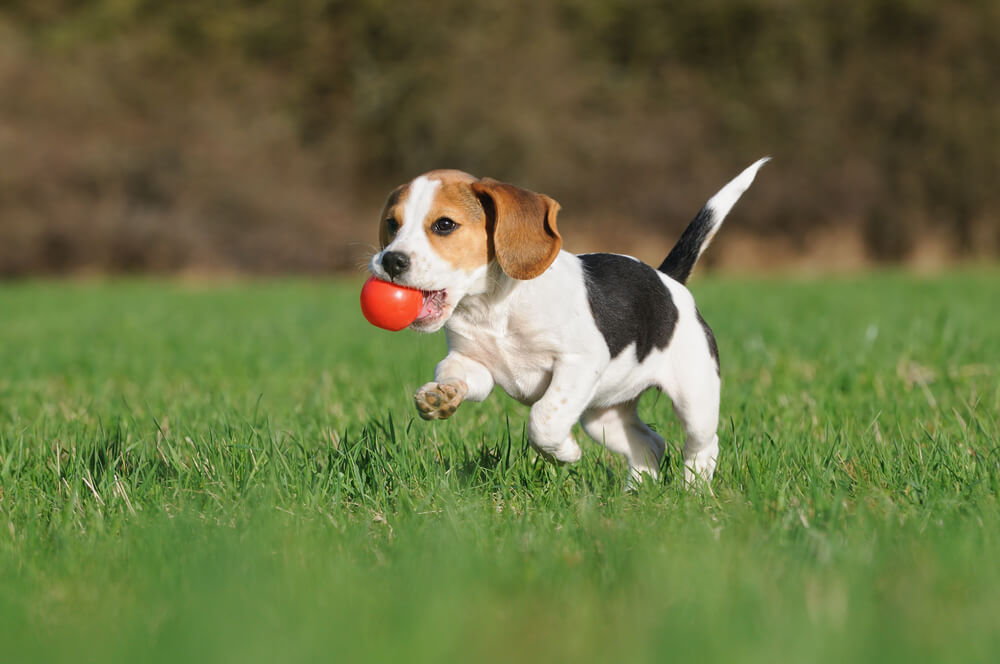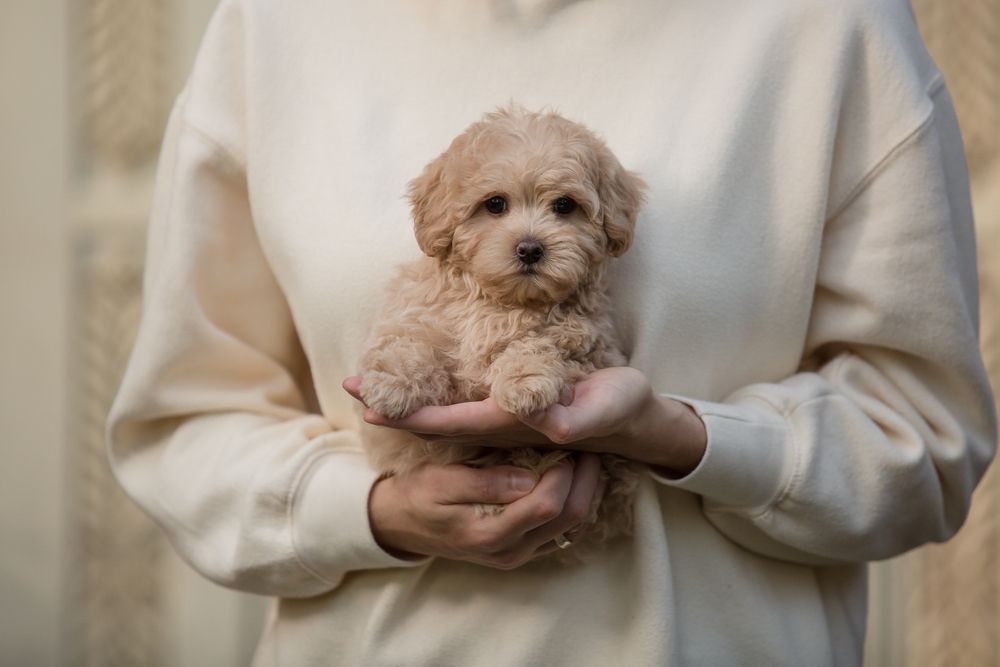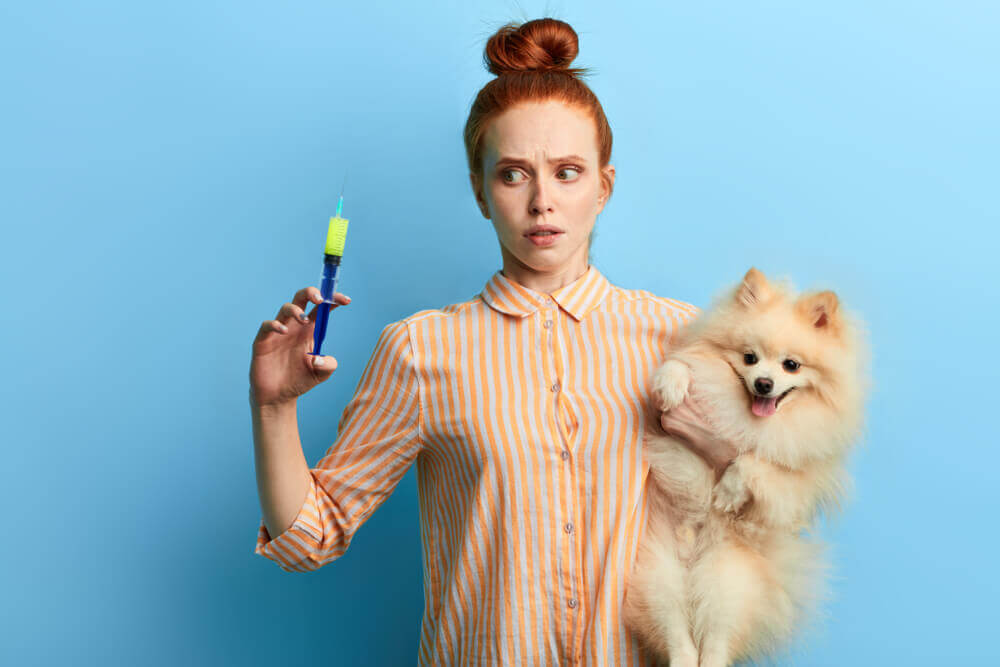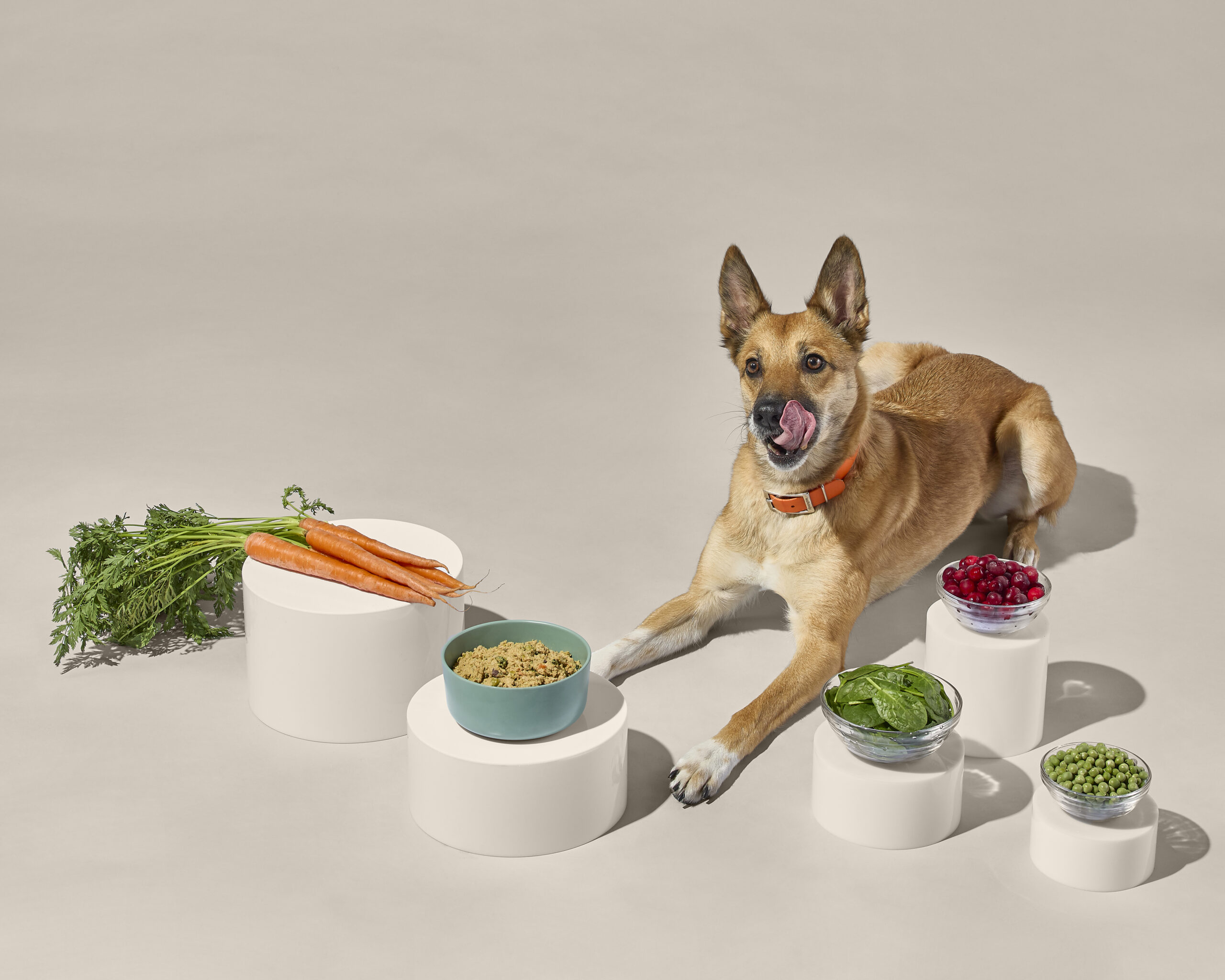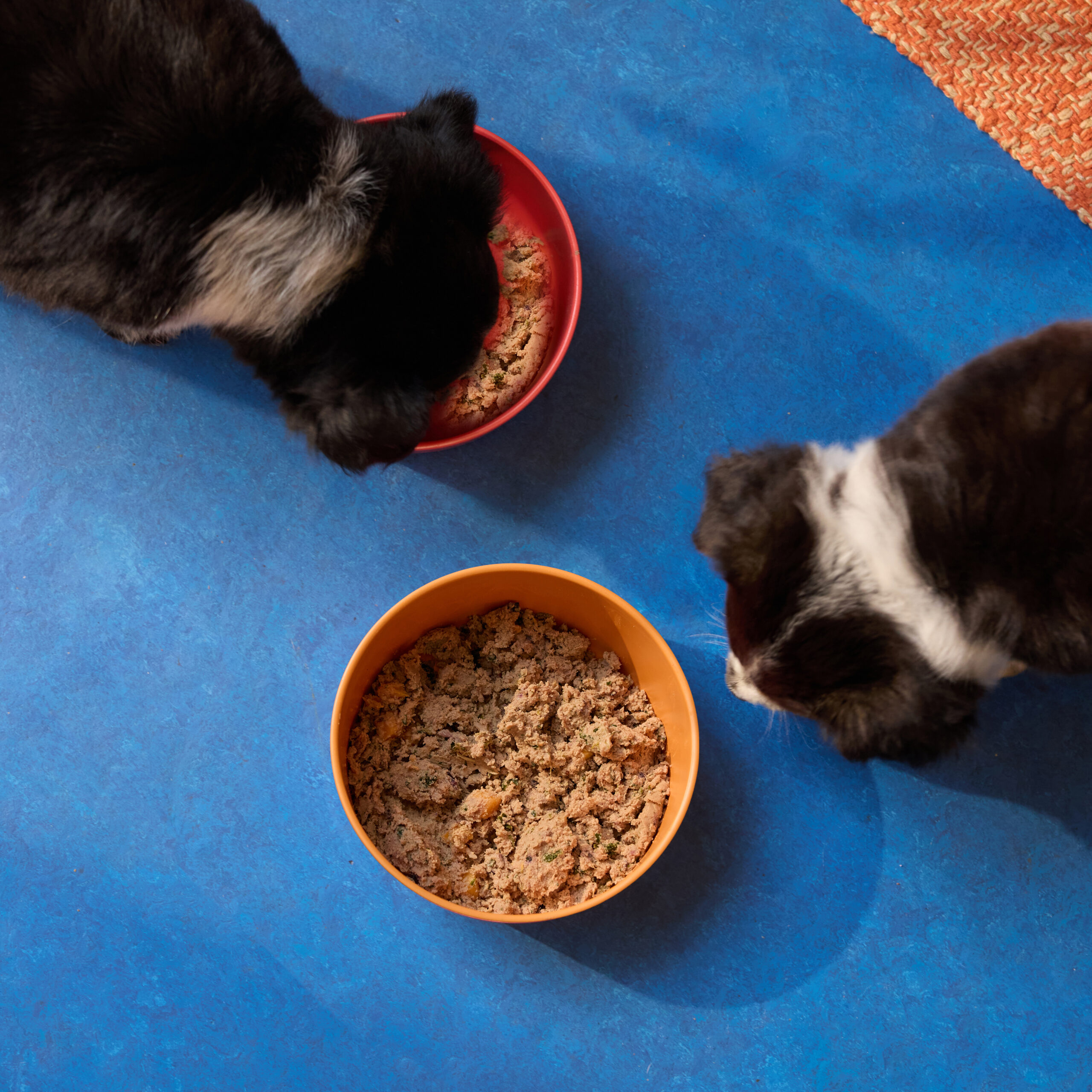Hey Ollie blog readers! We’re offering you an exclusive 60% OFF your starter box! Try now!
You’re in the kitchen, making a sandwich, when your dog gives you that look—the one that says, “Are you going to share that?” A dab of peanut butter on a spoon seems harmless enough. But before you offer it up, you pause and wonder: Can dogs eat peanut butter?
It’s a question almost every dog parent has asked. And the answer is mostly yes, but with a few big caveats. While peanut butter can be a tasty and even beneficial treat for dogs, some types can actually be dangerous.
In this guide, we’re breaking down what you need to know about feeding peanut butter safely. You’ll learn which ingredients to avoid, how much is too much, and what kind of peanut butter is actually safe for your dog. We’ll also cover how to use it smartly, as a training treat, toy filler, or even a way to sneak in medication.If your dog already loves the stuff (and let’s be real, most do), this article will help you feel confident you’re giving it the right way.
Can Dogs Eat Peanut Butter? The Short Answer
Yes, most dogs can eat peanut butter. In fact, many pups love it—and when used properly, it can be a fun, protein-rich treat. But here’s the key: not all peanut butter is safe for dogs.
Some store-bought peanut butters include ingredients that are completely fine for humans, but dangerous—or even toxic—for dogs. That’s why it’s not just about whether dogs can have peanut butter, but what kind they’re eating.
Plain peanut butter in moderation is generally safe for dogs, says Dr. Tina Wismer, DVM, senior director at the ASPCA Animal Poison Control Center. But some sugar-free products contain xylitol, which is extremely toxic to pets.
So yes, dogs can eat peanut butter. But it needs to be:
- Free from xylitol
- Low in added sugar and salt
- Given in small amounts
Natural or unsweetened peanut butter is usually the safest choice. Think simple labels with recognizable ingredients, nothing artificial or overly processed. That’s the kind of food we believe in at Ollie, where transparency and real ingredients are the norm, not the exception.
What Makes Some Peanut Butter Dangerous for Dogs?
Peanut butter might seem like a harmless snack, but not all jars are dog-friendly. Some types include ingredients that can cause serious health issues—even in small amounts.
Here’s what to look out for:
Xylitol: The Big Red Flag
Xylitol is an artificial sweetener found in some sugar-free or “low-carb” peanut butters. While safe for humans, it’s extremely toxic to dogs—even in tiny doses.
According to the FDA, xylitol can cause a dangerous drop in blood sugar (hypoglycemia) and may lead to liver failure in dogs.
If you see “sugar-free” on the label, double-check for xylitol. It may also be listed as a sugar alcohol or under other chemical names like birch sugar.
Added Sugar and Salt
Too much sugar isn’t healthy for dogs, and can lead to weight gain, dental issues, and blood sugar spikes. Excess salt can strain the kidneys and cause dehydration, especially in smaller breeds or dogs with heart issues.
Other Ingredients to Avoid
- Hydrogenated oils or trans fats
- Palm oil in large amounts (linked to stomach upset)
- Artificial flavors or preservatives
Avoid These: Peanut butters with xylitol, chocolate, high fructose corn syrup, artificial sweeteners, or added salt should stay far away from your dog’s bowl.
When you give your dog peanut butter, it should be simple, clean, and easy to digest. That’s why at Ollie, we use only dog-safe, high-quality ingredients in our treats and meal options, so you don’t have to play label detective every time you want to share a snack.
Is Peanut Butter Good for Dogs? Benefits in Moderation
When it’s the right kind, peanut butter can actually offer a few benefits for dogs. It’s tasty, calorie-dense, and full of healthy fats and protein—but like any treat, it’s only good in the right amount.
Here’s how peanut butter can be a smart addition to your dog’s treat lineup:
Protein and Healthy Fats
Peanut butter contains plant-based protein and unsaturated fats that can help support energy and coat health. It’s not a complete protein source like meat, but it can complement a balanced diet.
Helpful for Training and Enrichment
Peanut butter’s texture makes it a great high-value reward. You can:
- Use it to fill a puzzle toy or KONG
- Freeze it for longer playtime
- Use a swipe on a lick mat during grooming or vet visits
Makes Medication Easier
If your dog is picky with pills, peanut butter can be a game-changer. A small spoonful wrapped around medication can make dosing stress-free—for you and your pup.
A Smart Way to Add Calories
For dogs who need to gain weight or who are picky eaters, peanut butter can help increase daily calories in a safe and appealing way. Just be sure to account for the added calories in their total intake.
What Peanut Butter Is Safe for Dogs? Ingredient Checklist
The best peanut butter for dogs is simple. It should contain just peanuts—maybe a touch of natural oil, and nothing else. But labels can be tricky, and not every “natural” peanut butter is actually safe.
Here’s how to tell the difference:
Look for These Ingredients
- Peanuts (just peanuts is best)
- Peanut oil
- A small amount of natural sweetener like honey (optional)
These ingredients are generally safe and easy for dogs to digest. Less is more, avoid long ingredient lists or anything you wouldn’t eat yourself.
Avoid These Ingredients
| Unsafe Ingredients | Why to Avoid |
| Xylitol | Toxic to dogs—even in small amounts |
| High fructose corn syrup | Unnecessary sugar; can cause weight gain |
| Salt (added) | Can contribute to dehydration and kidney strain |
| Palm oil (in large amounts) | Can cause loose stools or digestive upset |
| Artificial flavors/preservatives | Unnecessary chemicals your dog doesn’t need |
Tip: Always read the full ingredient list, not just the front label. “Natural” doesn’t always mean safe.
Can Puppies Have Peanut Butter?
Yes, most puppies can have peanut butter—but it comes with a few important guidelines.
Puppies have developing digestive systems, so their tolerance for rich or high-fat foods isn’t the same as an adult dog’s. If you’re thinking about giving your puppy peanut butter, here’s what you need to know first.
Check the Label (Every Time)
Just like with adult dogs, never give your puppy peanut butter that contains xylitol, added sugar, or artificial ingredients. Even a small amount of xylitol can be life-threatening.
Start Small and Watch Closely
The first time you offer peanut butter:
- Give just a small lick
- Watch for signs of allergy (itching, swelling, vomiting, diarrhea)
- Skip it if your puppy has a sensitive stomach or is prone to loose stools
Use It for Enrichment and Training
Puppy training? A swipe of peanut butter can be a great reward. Use it:
- Inside a treat-dispensing toy
- On a spoon to redirect during grooming
- As a reward for crate time or alone-time training
It’s a high-value treat, so it should be used intentionally—not as an everyday snack.
How Much Peanut Butter Can I Give My Dog?
Peanut butter may be delicious, but it’s also calorie-dense and high in fat—so portion control is key. Even the healthiest peanut butter should be treated like… well, a treat.
Here’s how to feed peanut butter to your dog safely:
General Rule: Less Than 10% of Daily Calories
Treats, including peanut butter, should make up no more than 10% of your dog’s total daily calorie intake. The other 90% should come from complete, balanced meals. Even healthy treats like peanut butter should be fed in moderation.
Quick Portion Guidelines by Dog Weight
| Dog Size | Max Peanut Butter (per day) |
| Under 20 lbs | ½ teaspoon |
| 20–50 lbs | 1 teaspoon |
| Over 50 lbs | Up to 1 tablespoon |
These are upper limits, not daily recommendations. You can always give less based on your dog’s activity level, health status, and how often they get other treats.
Track Calories When Using Peanut Butter for:
- Medication masking
- Training sessions
- Toy stuffing
- Food toppers
If you’re already feeding high-value treats or a higher-fat diet, factor that in. And for dogs with weight issues or pancreatitis, skip peanut butter entirely unless your vet says otherwise.
Ollie Makes the Rest Easy
Feeding peanut butter the right way starts with knowing what your dog’s main meals look like. With Ollie, you get personalized, portioned meals based on your dog’s size, breed, age, and activity level, so it’s easier to manage treats without throwing off their balance.
Creative Ways to Feed Peanut Butter Safely
Peanut butter isn’t just a tasty treat—it can also be a super useful tool for enrichment, training, and even stress relief. The key is using it smartly and in small amounts.
Here are some safe and creative ways to share peanut butter with your dog:
1. Frozen Peanut Butter KONG
Stuff a KONG toy with a small amount of peanut butter and freeze it. It keeps your dog occupied, especially during crate time or when guests come over.
Bonus tip: Mix peanut butter with mashed banana or plain pumpkin before freezing for extra fiber and flavor.
2. Training Reward
Use a spoon or small treat stick to offer a quick lick of peanut butter during training sessions. It’s high value, so a little goes a long way—perfect for reinforcing good behavior.
3. Pill Hider
Struggling to give your dog medication? A small dab of peanut butter can help mask the taste and make pill time stress-free.
4. Lick Mats for Grooming Distraction
Spread a thin layer on a silicone lick mat during bath time or nail trims. The licking motion soothes dogs and keeps their focus off the task at hand.
5. Food Topper for Picky Eaters
If your dog’s being selective at mealtime, a tiny spoonful of peanut butter mixed with their food can add just enough aroma to spark interest, especially when it’s paired with a fresh, gently cooked meal like Ollie.
Keep It Safe
- Use xylitol-free peanut butter only
- Stick to pea-sized amounts for small dogs
Don’t overdo it, use peanut butter as a treat, not a meal substitute
Signs Your Dog Shouldn’t Eat Peanut Butter
Even though many dogs can enjoy peanut butter safely, some may have negative reactions. Whether it’s a sensitivity, allergy, or a pre-existing health issue, it’s important to watch how your dog responds—especially after trying it for the first time.
Here are signs that peanut butter might not be a good choice for your dog:
Possible Symptoms of an Issue
- Itching or hives
- Vomiting or diarrhea
- Excessive gas or bloating
- Lethargy after eating
- Swelling around the face or paws
- Weight gain over time (if overfed)
If your dog shows any of these signs after eating peanut butter, stop offering it and talk to your vet. Allergic reactions can range from mild to serious, and fat-rich foods can trigger digestive problems in sensitive dogs.
Who Should Skip Peanut Butter?
- Dogs with pancreatitis or a history of digestive issues
- Dogs on a low-fat, prescription diet
- Overweight dogs on a calorie-restricted plan
- Dogs with peanut allergies (rare, but possible)
Even if your dog loves it, peanut butter isn’t essential to a healthy diet. There are other treats, and better ways to add flavor or enrichment without the extra fat.
FAQs Peanut Butter For Dogs
Can dogs eat peanut butter with salt?
Small amounts of salted peanut butter aren’t toxic, but it’s better to choose unsalted varieties. Too much salt can lead to dehydration and strain your dog’s kidneys—especially in smaller breeds or senior dogs.
What kind of peanut butter is best for dogs?
The safest peanut butter for dogs is natural, unsalted, and xylitol-free. Look for products with a short ingredient list—ideally just peanuts and maybe a small amount of peanut oil.
Is crunchy peanut butter safe for dogs?
Yes, as long as it doesn’t contain xylitol or added sugar, crunchy peanut butter is safe. However, it may pose a choking risk for small dogs or fast eaters, so smooth peanut butter is often the safer choice.
Can dogs be allergic to peanuts?
It’s rare, but dogs can be allergic to peanuts. Signs include itching, vomiting, swelling, or digestive upset. Always introduce new foods slowly and monitor your dog for any reaction.
Can dogs eat peanut butter every day?
It’s best to offer peanut butter occasionally, not daily. Too much can add unnecessary fat and calories. Stick to small portions as a special treat, not part of your dog’s regular feeding routine.
Tagged As:

The nutrition your dog needs,
the food they want.

Enjoying our articles? Subscribe our Newsletters and get new articles directly to your inbox
You might also like
11 September 2025
7 MINS READ
Gentle Recipes Your Dog Will Love: Top Dog Food for Sensitive Stomachs
With vomiting, diarrhea or loose stools, excessive gas, lack of appetite, no pup parent enjoys seeing their dog struggle through the effects of a sensitive stomach. While finding the best food for…
by Ollie Pets
8 September 2025
9 MINS READ
Top Natural Puppy Food Picks for Healthy Growth
Bringing home a new puppy means a lot of excitement—and important nutrition decisions. Because puppies require more calories, fat, protein, and essential nutrients than adult dogs [1], you may w…
by Ollie Pets
8 September 2025
9 MINS READ
New Pup Feeding Chart: First 8 Weeks Explained
Welcoming a new puppy is an exciting experience, but it can also be overwhelming—especially when it comes to their nutrition. While the first eight weeks are crucial for your dog’s development…
by Ollie Pets

